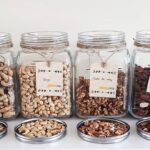
Encanto. Chef Avillez’s new restaurant is vegetarian and we tried it out
Chiado has gained a vegetarian fine dining restaurant. The menu is fixed, with surprises, and the warmth of those who serve us makes the visit
We didn't find any happenings mapped to your criteria.
Try the traditional search to find articles not yet mapped with RUA.
We didn't find any happenings mapped to your criteria.
Try the traditional search to find articles not yet mapped with RUA.
We didn't find any happenings mapped to your criteria.
Try the traditional search to find articles not yet mapped with RUA.
We didn't find any happenings mapped to your criteria.
Try the traditional search to find articles not yet mapped with RUA.
By January 22, renewable energies contributed to almost 90% of the national electricity consumption.
It was on January 16th that the national electrical system registered the highest value ever of wind production in a single day: 106.7 gigawatt hours (GWh) generated. On this day, renewable energy production supplied 97% of electricity consumption, with wind power guaranteeing 56%. The previous record had been set on November 11, 2022, with 104.2 GWh, according to a statement by REN – Redes Energéticas Nacionais.
But it was not only wind power that stood out in the first month of 2023. Also, water production had an all-time high on the 4th, surpassing a daily record that dated back to 2018. On that day, hydroelectric power plants were in operation with
a capacity of 6531 megawatts (MW). This value is due to the high precipitation and the increased flow of the streams in that period.
During January 4, production reached 99 GWh (three times the amount registered in the same period of the previous year), which meant that the electricity produced at the dams contributed to two thirds of consumption.
In cumulative terms, renewables contributed to 89% of the national electricity consumption between January 1 and 22, after 2022 ended with a 49% contribution from renewables (wind energy accounted for 25%, the
hydroelectric 12%, biomass 7%, and photovoltaic 5%).


Chiado has gained a vegetarian fine dining restaurant. The menu is fixed, with surprises, and the warmth of those who serve us makes the visit

Are you a fan of bulk buying and do you live or are you around Leiria? We have gathered five stores that promote a more

One of the aims of the University of Coimbra’s project is to create a “Refuge House”, an infrastructure with a forest fire risk so low

This article addresses an action that promotes inclusive and sustainable industrialization and fosters innovation. SDG 9 also supports greater adoption of renewable technologies.
 To discover businesses that are actively working to contribute to this Sustainable Development Goal, click here.
To discover businesses that are actively working to contribute to this Sustainable Development Goal, click here. To read news, interviews or tips related to this Goal, click here.
To read news, interviews or tips related to this Goal, click here.Esta publicação também está disponível em:
![]() Português (Portuguese (Portugal))
Português (Portuguese (Portugal))

